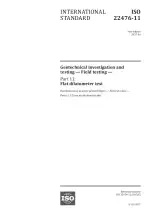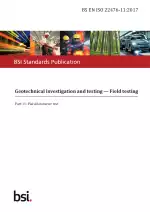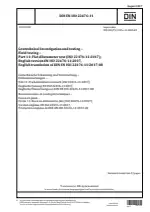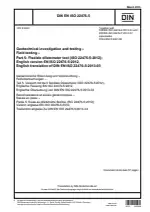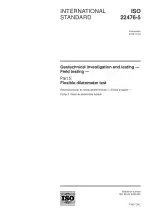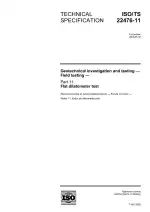Geotechnical Investigation and Testing - Field Testing - Part 11: Flat Dilatometer Test
Also Known As:
ISO 22476-11:2017 is a standard that provides guidelines for the equipment requirements, execution, and reporting of flat dilatometer tests in geotechnical investigation and testing. The standard is in line with the requirements of EN 1997-1 and EN 1997-2.
The basic flat dilatometer test involves inserting a blade-shaped steel probe with a circular steel membrane into the soil. The membrane is mounted flush on one face of the probe and is expandable. Two pressures are determined at selected depth intervals during the test: the contact pressure exerted by the soil against the membrane when the membrane is flush with the blade, and the pressure exerted when the central displacement of the membrane reaches 1.10 mm.
The results of flat dilatometer tests are primarily used to obtain information on soil stratigraphy, in situ state of stress, deformation properties, and shear strength. It is particularly effective in detecting slip surfaces in clays. The test is most applicable to clays, silts, and sands, where the particle size is small compared to the size of the membrane.
| Edition | 1 |
| ICS Codes | 93.020 - Earthworks. Excavations. Foundation construction. Underground works |
| Language(s) | English |
| File Size | 430.1 KB |

